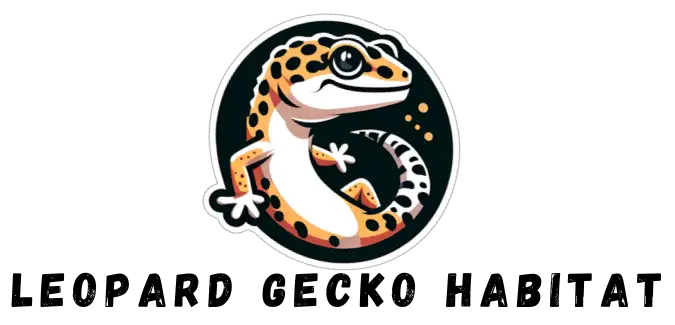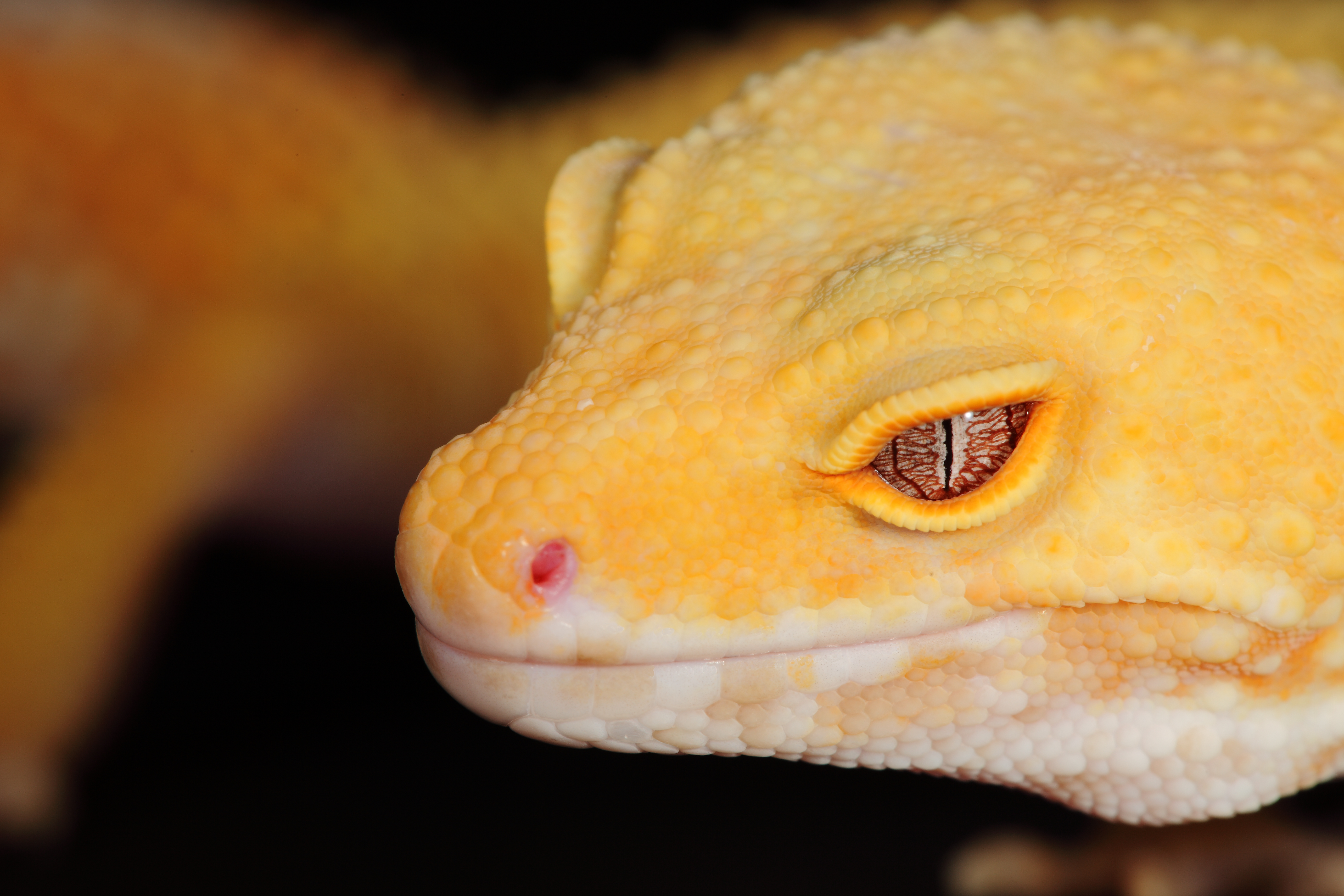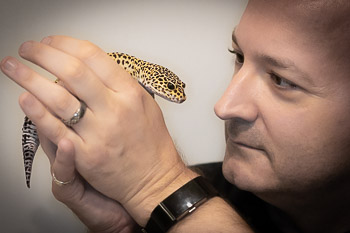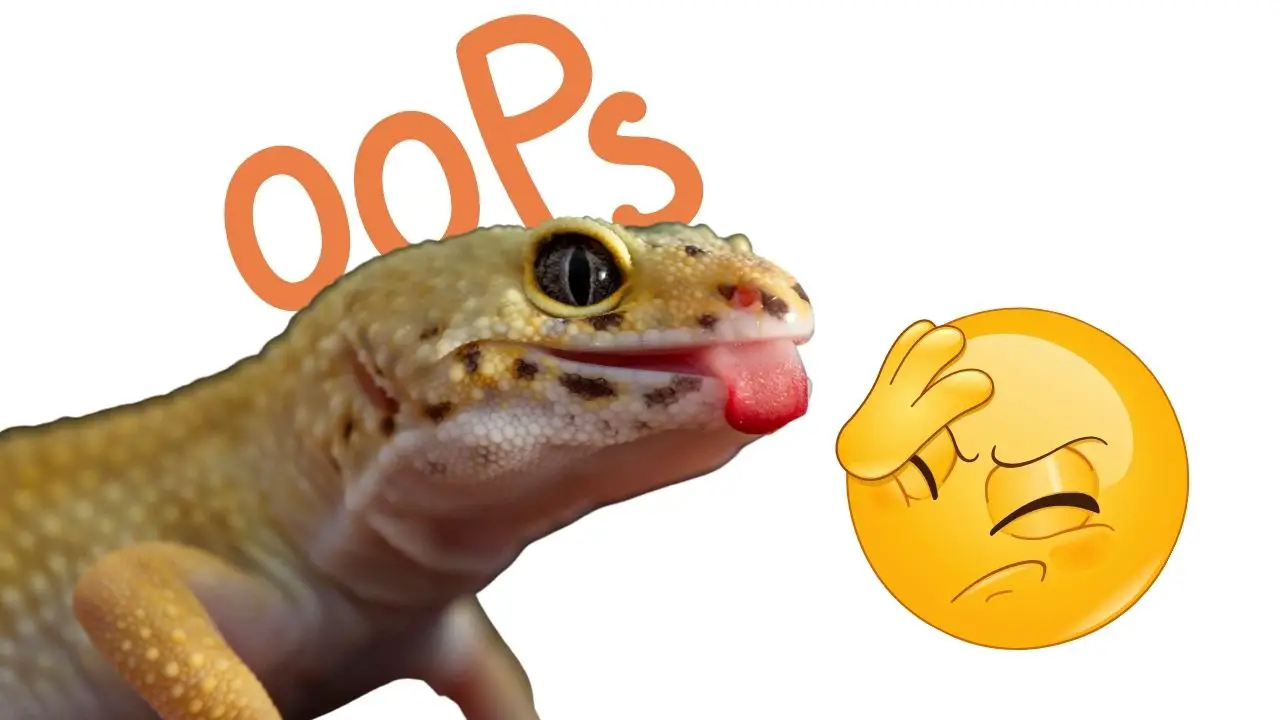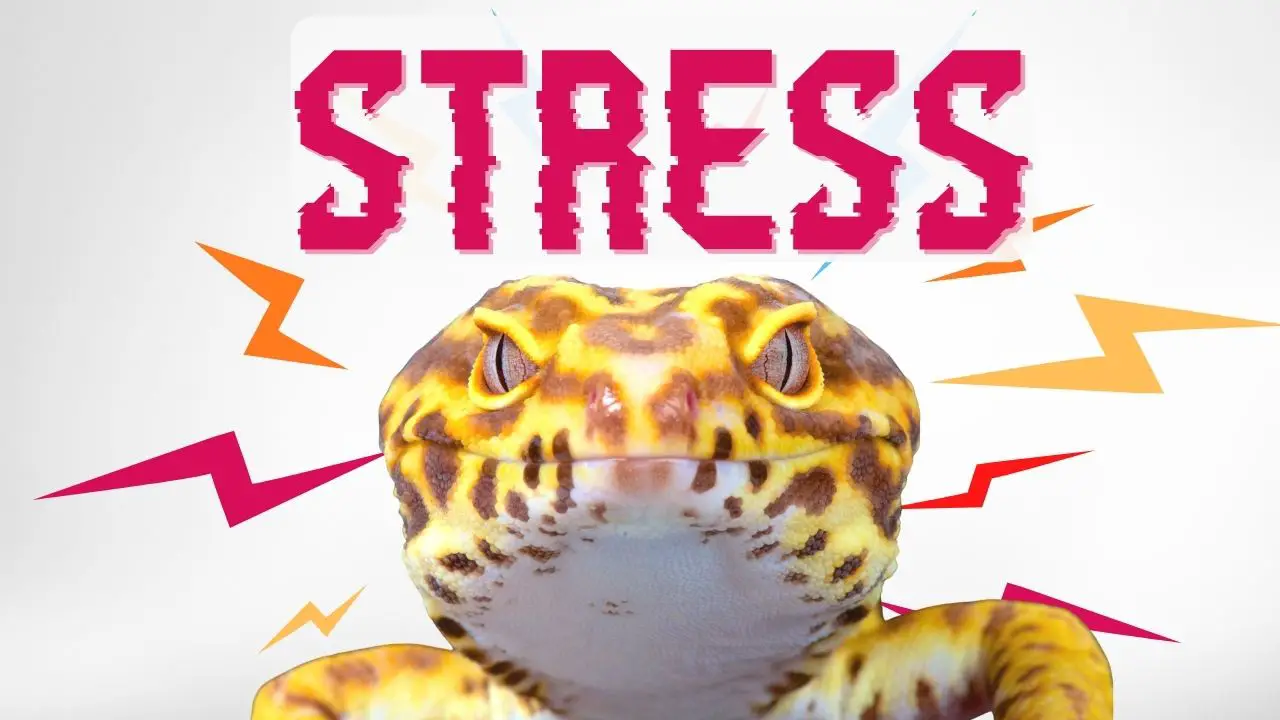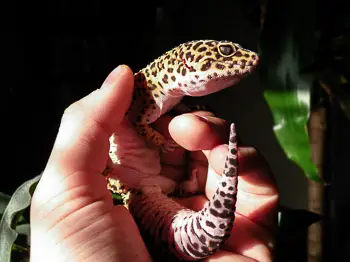There are a variety of leopard gecko morph breeds available. While the number of leopard gecko morphs number over 100, there are primary combinations of several key morphs. New morph combinations are being discovered (or created) as breeders continue to experiment with selective breeding.
The High Yellow morph (described below) was one of the first recognized variations of the ‘normal’ or wild leopard gecko appearance. Morphs started coming into vogue in the mid 1990’s after Ron Tremper discovered a particular combination of breeding that yielded a leopard gecko lacking the characteristic black spots. This became known as the Tremper Albino, and was a breakthrough in captive bred selective breeding.
Since, leopard gecko breeders have developed all kinds of combinations to bring out different colors, stripes, spots, patterns, eye color, and even size.
When you see a leopard gecko morph listed as something like Mack Snow Tremper Albino Het Eclipse, what does all of that mean?
Types of Leopard Gecko Morphs
There are 4 main characteristics that differentiate morphs:
- Pattern
- Color
- Eye Color
- Size
In this post, we’ll describe some of the various types of morphs and their characteristics. First up:
Morph Patterns
“Normal” or wild leopard geckos display the characteristic black spots and yellow coloring that give the leopard gecko its name. Leopard gecko morph breeds include variations on the pattern to have bolder or a larger or sparser concentration of spots. Some morphs have stripes instead of spots, and some have no pattern at all.
Below is a list of some of the breeds and terms you may come across when browsing or discussing leopard gecko morphs:
Aberrant
Aberrants have a broken pattern on the tail or body, though not both
Albino
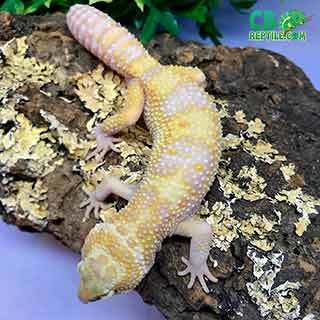
Leopard gecko albinos have a lack of black pigment, as opposed to white skin and pink eyes normally associate albinism in other species.
Albinos are more light sensitive than most leopard geckos.
There are 3 distinct types of albino leopard geckos:
- Tremper Albino
- First albino morph breed discovered
- Has characteristic brown spots
- Rainwater Albino (Pictured above – also referred to as “Las Vegas“)
- Physically smaller than other albino morphs
- Usually lighter in color, and may tend toward pink hues
- Bell Albino (Texas Albino)
- Most recently discovered albino leopard gecko
- Characteristic coloring includes light pink eyes and a lavender hue
A.P.T.O.R
APTOR stands for Albino Patternless Tangerine Orange (not to be confused with the R.A.P.T.O.R which has solid red eyes.) APTORs are bred through a combination of the Eclipse, Patternless, and Tremper Albino morphs.
Baldy
Baldy leopard geckos lack spotting on their heads, though have spots on the rest of their bodies.
Bandit
Bandit morphs usually have less spots on their heads in favor of a few bold stripes or markings between their nose and eyes, resembling a bandit’s mask
Blizzard
Blizzard leopard geckos lack spots, banding, and patterns and characteristically have the solid black eyes of the eclipse morph.
Blizzards usually range from white to gray in color.
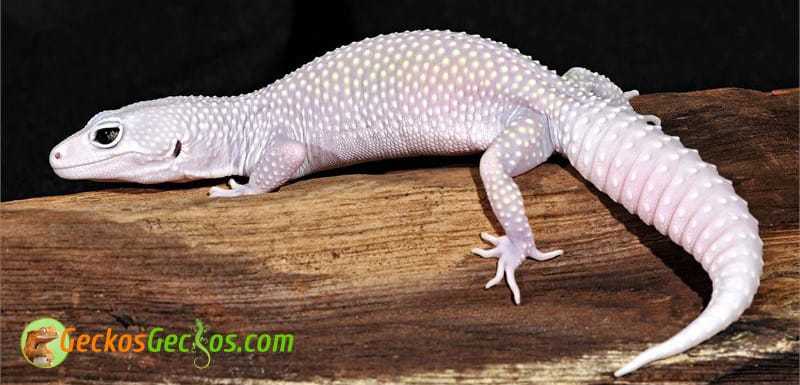
Diablo Blanco
The Diablo Blanco is a striking combination of the Blizzard and the R.A.P.T.O.R. Discovered in 2006, Diablo Blancos have the lack of pattern and white color of the Blizzard, and get the red eyes from the RAPTOR.
Halloween Mask
Similar to Bandits, Halloween Mask morphs have bold patterns on their heads, often with dark bands or spots.
Jungle
Jungle morphs have a collection of irregular strips and spots throughout their body and legs, much like jungle camouflage. There are broken patterns on both the body and tail.
Oreo
Like the Oreo cookie that they’re names after, these have a black and white color pattern
Patternless
Also referred to as “Murphy Patternless” or “Leucistic.” As the name implies, geckos with this trait lack the typical spotting and patterns usually associated with leopard geckos
Different from Blizzards, Patternless leopard geckos often have orange coloring at the base of the tail, sometimes referred to as “carrot tail”
Pinstripe
As the name suggests, these morphs have thin, pinstripe-like patterns along the body
Speckled
These morphs have a speckled pattern over a base color
Starburst
Starbusrts sport a burst-like pattern, often with contrasting colors
Stripes & Reverse Stripes
Striped morphs have a stripe of color with a dark outline down the length of the body from neck to tail, usually with a dark tail.
Reverse stripes are the opposite, having a dark strip lined with a lighter color, and usually a white tail.

The juvenile leopard gecko pictured here has strips running the length of its body, as well as down the sides of the tail.
Morph Color
Besides pattern (or lack of pattern), color is another key trait that can be manipulated by genetic breeding. Normal leopard geckos are typically yellow with black spots. These leopard gecko morph breeds offer a variety of choices in the color department.
Fancy
“Fancy” is not so much of another morph, but a term for your average pet store variety leopard gecko with a yellow base and black spots.
High Yellow
Before creating new types of morphs became vogue, there was the High Yellow. High yellow was one of the first morphs discovered, and remains a fairly common morph. High Yellow morphs have fewer black spots and a deeper yellow color.
Lavender
Lavender or light purple base, though this coloring may fade with age

Mack Snow
Mack Snow leopard geckos have little or no yellow/orange coloring
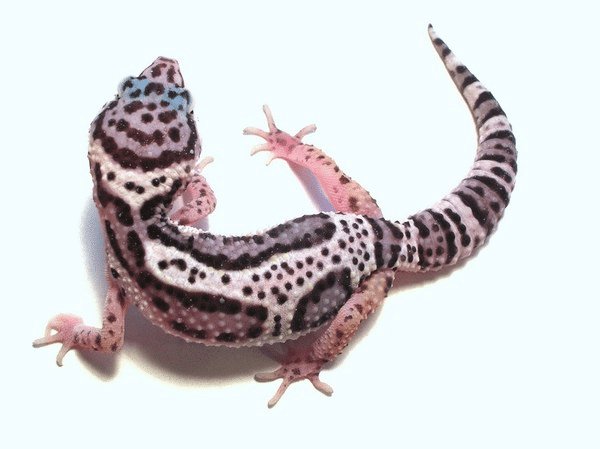
Mandarin
Mandarins sport a deep, rich orange coloration with a high degree of saturation
Melanistic
Melanistic leopard geckos are mostly black in color, like the Black Night Leopard Gecko shown here from cbreptile.com.
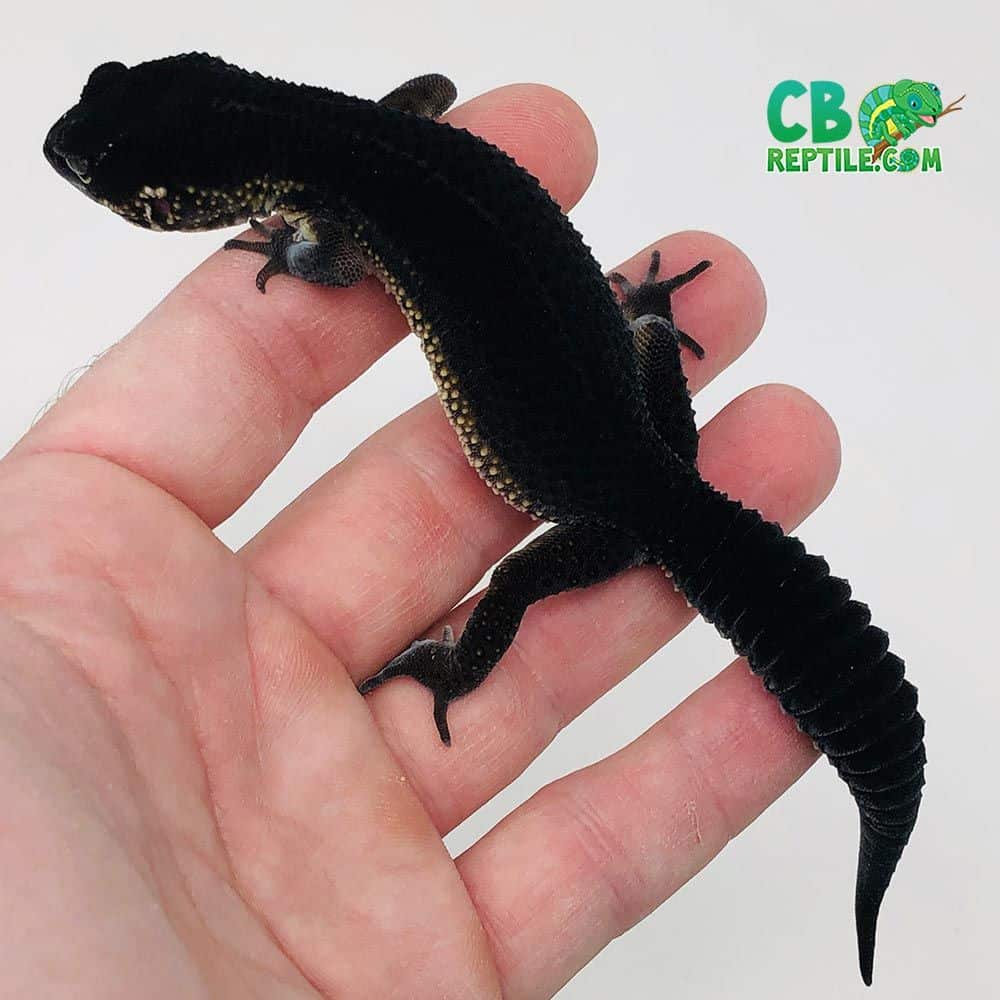
Rainbow
These have a multicolored appearance with a blend of different hues
Sunglow
Sunglows are a combination of Albino and Hypomelanistic. They are often yellow or orange, and may have eyes reflecting albino parent.
Super Hypo
Super Hypos lack melanin and as a result are usually yellow or orange with fewer spots, excluding the head and tail
Tangerine
Tangerine leopard geckos have an orange color. There are variations referred to as “Carrot Head” or “Carrot Tail”, depending on where the orange color is concentrated.
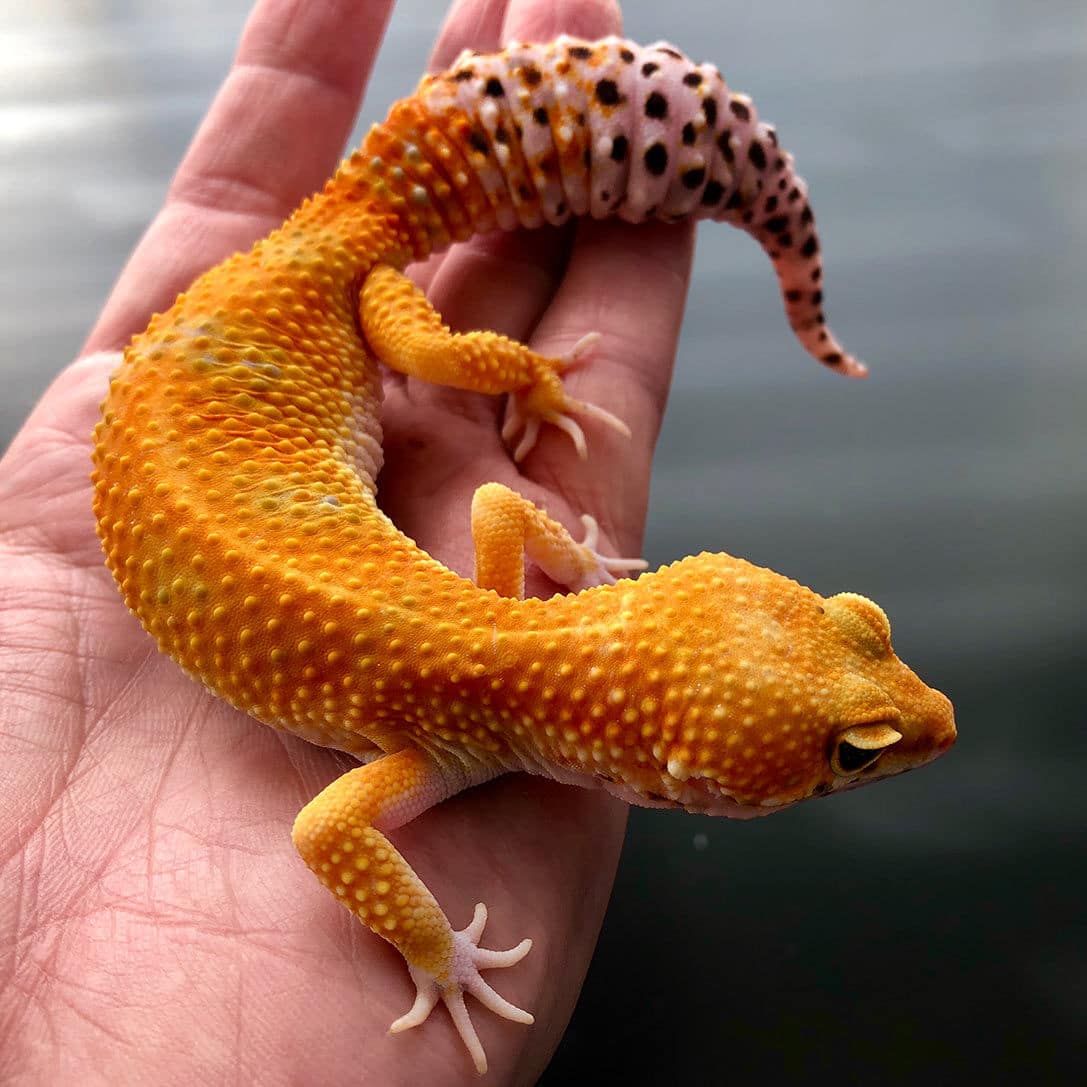
The tangerine morph we see here from CB Reptile shows the orange coloring throughout.
Tangelo
Tangelos result from tangerine leopard geckos crossed with a Tremper Albino. The result is a white body with orange stripes or patterning.
White and Yellow
As you may imaging by the name, these have a bright yellow and white coloration in a high contrast pattern
Morph Eye Color
Eclipse
Eclipse geckos are notable in that their eyes are solid black. Eclipses are commonly combined with other morphs to produce a variation with black eyes.
When crossed with the Tremper Albino, there is a chance of producing a leopard gecko with solid red eyes
RAPTOR and APTOR
- RAPTOR is an acrynym for Red-Eye Albino Patternless Tangerine Orange
- RAPTORS are bred through a combination of the Eclipse, Patternless, and Tremper Albino
- An APTOR is a RAPTOR without red eyes
Morph Size
Beyond patterns and colors, size is another physical characteristic that can be affected by genetics in several leopard gecko morph breeds.
Giant
Larger than your average leopard gecko, with males up to 110 grams and females up to 90 grams
Super Giant
The offspring of two giant leopard geckos can be a Super Giant. Super Giants, as the name implies are even bigger than the giants, ranging 110 to 130 grams at about 12 inches in length.
Godzilla
Thought the Super Giants were big? Godzilla morphs are the largest leopard geckos available.
Kind of Leopard Gecko Morphs – And so it continues...
This is not by any means a complete list of leopard gecko morphs available. Our goal here is to provide a solid overview of the most visually striking and common morphs you’re likely to encounter. New combinations and variants are being developed as breeders and enthusiasts alike continue selective breeding.
Many of these traits come from recessive genes, and even with careful planning, there is a certain amount of luck involved over what genetic traits are visible. Some combinations take generations to produce (and are priced accordingly!)
It’s exciting to see the designer leopard geckos they’re producing.
